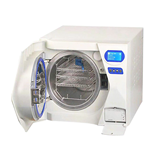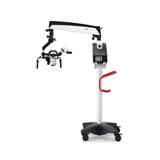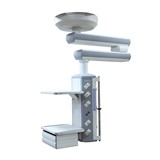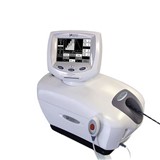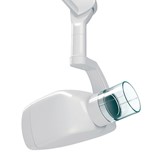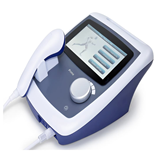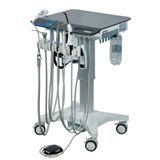Compare leasing, hire purchase, and loan options for beauty equipment in Australia. Learn how each finance type works, costs, and which suits your salon or clinic best.
Key takeaways
- Beauty equipment financing is on the rise: The Australian beauty industry is expected to grow to $9.3 billion by 2026, with many clinics using financing to manage equipment costs and scale operations.
- Leasing spreads cost with flexibility: Operating leases let you use equipment with lower upfront cost and potential tax benefits, ideal for rapidly evolving tech like laser or contouring machines.
- Hire purchase leads to ownership: Pay in instalments and own the asset at the end. Great for high-ticket, long-life assets like multi-functional facial systems, typically priced from $10,000 to $45,000.
- Loans offer full control: A chattel mortgage or unsecured business loan offers outright ownership upfront, often used for clinic-wide fitouts or multiple device purchases.
- Interest rates vary: As of 2025, typical equipment finance rates range from 6.95% to 14.5% p.a., depending on credit, loan type, and equipment value.
- Financing fast-tracks growth: Businesses using equipment finance grow up to 30% faster than those relying solely on cash reserves.
- Match the model to your goals:
- Choose leasing for flexibility and low commitment.
- Use hire purchase if long-term ownership matters.
- Go for a loan if you want full control or bundle upgrades into a single package.
Introduction
Financing beauty equipment in Australia has become a smart and strategic move for clinics and salons aiming to stay ahead in a competitive and rapidly evolving market. With constant innovation in aesthetic devices—think cryolipolysis machines, laser hair removal systems, and hydrodermabrasion platforms—many business owners face a critical question:
Should you lease, hire purchase, or take out a loan to fund your equipment?
This guide breaks down each financing option, the benefits and risks, real-world examples tailored to the Australian beauty industry, and how to align your choice with your business goals. Whether you're expanding a skin clinic in Sydney or setting up a new salon in the Gold Coast, this article gives you the tools to make a confident, financially savvy decision.
Leasing beauty equipment
What is leasing?
Leasing is a form of rental agreement where your business pays a monthly fee to use the equipment for a set period—usually 12 to 60 months—without taking ownership (unless you negotiate a purchase option).
There are two main types:
- Operating lease: Lower monthly payments, no ownership obligation. Treated as an expense.
- Finance lease: Higher payments, with potential for ownership at the end via a balloon or buyout option.
Benefits of leasing
- Lower upfront costs: Preserve working capital for marketing, staff, or renovations.
- Tax efficiency: Lease payments are often 100% tax-deductible as an operating expense.
- Access to cutting-edge tech: Upgrade equipment easily at the end of term.
- Ideal for rapidly evolving devices: Popular for laser, IPL and RF contouring machines, where tech changes fast.
Risks and considerations
- No equity: You don't own the equipment unless you negotiate to buy.
- Long-term cost: Leasing can cost more over time than purchasing outright.
- Locked-in contracts: Early termination fees may apply.
Example scenario
A Brisbane-based salon leases a $35,000 hydrodermabrasion unit under a 3-year operating lease at $1,250/month. They claim full tax deductibility on payments and plan to upgrade in 36 months.
Hire purchase
What is a hire purchase?
A hire purchase allows you to use equipment while paying it off in instalments, gaining ownership after the final payment. It's commonly used for equipment valued between $10,000 and $80,000.
Benefits of hire purchase
- Eventual ownership: Own the device outright once payments are complete.
- Fixed repayments: Budget-friendly with predictable monthly outgoings.
- Asset depreciation: You may claim depreciation and interest deductions (ATO, 2025).
- Better rates than unsecured loans: Equipment acts as security.
Risks and considerations
- You carry the risk: Maintenance and damage costs are yours from day one.
- Not ideal for short-term use: Best suited for long-term assets.
- Upfront deposit: Typically 10–20% is required.
Example scenario
A Perth skin clinic acquires a $40,000 HIFU machine with a 15% deposit ($6,000) and repays the balance over 4 years at $850/month. They depreciate the asset and own it outright at the end.
Equipment loans (Chattel mortgages and business loans)
What is a chattel mortgage?
A chattel mortgage is a secured loan where you borrow to purchase equipment and the lender uses the equipment as security.
Alternatively, unsecured business loans can be used if you're buying multiple pieces or bundling fitout, software and training into one package.
Benefits of loans
- Full ownership upfront: You can customise, rebrand or resell as you wish.
- Tax benefits: Claim depreciation and interest.
- Bundled finance: Combine multiple purchases or include fitout and installation.
Risks and considerations
- Higher credit criteria: Requires solid financials or guarantors.
- Cash flow impact: Larger repayments than lease models.
- Down payment required: Especially with unsecured lenders.
Example scenario
A Melbourne-based beauty clinic gets a $75,000 loan for a complete fitout, including a cryolipolysis device, facial scanner, and furniture. They repay over 5 years at $1,650/month with full equipment ownership and claim depreciation on all assets.
Comparing the three financing models
Lease
- Ownership: You do not own the equipment unless you negotiate an option to purchase at the end of the lease term.
- Upfront cost: Generally low, making it easier to preserve cash flow.
- Tax benefits: Lease payments are usually fully deductible as an operating expense, providing potential tax advantages.
- Flexibility: High, with the ability to upgrade or change equipment easily, ideal for technology that evolves quickly.
- Best for: Businesses seeking to keep up with rapid tech changes without committing to long-term ownership.
- Monthly cost estimate: Typically ranges from $500 to $2,000 or more, depending on equipment type and lease terms.
Hire Purchase
- Ownership: You gain full ownership after completing all payments.
- Upfront cost: Moderate, usually requiring a deposit of 10–20% of the equipment value.
- Tax benefits: You can claim both interest on payments and depreciation on the asset, which may improve tax efficiency.
- Flexibility: Medium; payments are fixed and longer-term, but you are responsible for maintenance and upkeep from the start.
- Best for: Businesses planning to own their equipment long term, especially for durable assets.
- Monthly cost estimate: Usually between $600 and $1,500, depending on the purchase price and payment period.
Loan (Chattel Mortgage)
- Ownership: Immediate ownership of the equipment upon purchase.
- Upfront cost: Moderate to high, depending on loan terms and down payment requirements.
- Tax benefits: Interest payments and depreciation claims are available, often providing good tax advantages.
- Flexibility: Low, due to fixed terms and repayment schedules.
- Best for: Businesses wanting full control over multiple or bundled purchases, including fitouts or combined asset packages.
- Monthly cost estimate: Typically from $700 up to $2,500 or more, depending on loan size and term length.
How to choose the right financing option for your clinic or salon
Assess your business goals
- Short-term tech use? = Leasing
- Own critical tools? = Hire purchase
- Full control & bundling? = Loan
Consider the equipment type
- Technology that becomes outdated quickly (e.g. laser/IPL): Lease
- Durable, multi-use platforms (e.g. RF, ultrasound, microcurrent): Hire purchase or loan
- Large purchases or business-wide upgrades: Loan or multi-asset hire purchase
Cash flow and seasonality
- Match repayments to seasonal trends. Some lenders offer:
- Deferred start terms
- Seasonal or low-start repayment plans
Credit readiness
- Clean credit files, up-to-date BAS statements, and 12+ months trading history give access to better rates.
- Some low-doc options exist for new clinics with strong forecasts.
Real-world finance options in Australia (2025)
Specialist lenders & brokers
- Rates range from 6.95% to 14.5% depending on asset type and borrower profile.
- Loan terms span from 12 to 84 months.
Government or incentive support
- Temporary full expensing ended in 2023, but SMEs can still claim small business asset write-offs (up to $20,000 per asset under 2025 tax rules).
- Ask your accountant about instant asset write-off eligibility for purchased or hire-purchased devices.
FAQs on beauty equipment financing in Australia
What is the best financing option for startup salons?
Leasing is often best as it lowers upfront costs, preserves capital, and allows flexibility while you test your service menu and audience. Look for no-deposit leases or 3-month deferred payment options.
Can I finance second-hand or refurbished beauty equipment?
Yes, but availability is limited. Loans or hire purchase are more common than leasing for second-hand units. Make sure the device:
- Has serial numbers and maintenance records
- Comes from a certified supplier
- Is listed on the lender’s approved asset list
What’s better for tax: leasing or buying?
- Leasing: Entire payments may be tax-deductible as expenses
- Buying (via loan or hire purchase): You can claim depreciation and interest costs. Consult a tax adviser to align with your clinic’s structure (sole trader, trust, company).
How quickly can I get approved?
- Low-doc lease or hire purchase: 1–3 days
- Full-doc loan: 3–10 business days. Have your ABN, recent BAS statements, equipment quote and ID ready to speed things up.
Can I finance consumables or training with the equipment?
Yes—especially under a chattel mortgage or unsecured loan. These can bundle:
- Equipment
- Installation
- Training
- Service plans
- Initial consumable kits
Will financing affect my credit score?
Yes—but responsibly managed finance improves your business credit profile. Missed repayments, however, will hurt your score. Choose a term that suits your expected cash flow.
Final thoughts
Choosing between a lease, hire purchase, or loan to finance your beauty equipment in Australia isn’t just about interest rates—it’s about matching your finance model to your business model. Whether you're building your first cosmetic clinic or expanding into a second salon, the right financing strategy can:
- Preserve your cash flow
- Scale your growth
- Offer flexibility or full control—depending on what you need most
If you're unsure which route to take, consider consulting a finance broker who understands the beauty industry. They can help you structure a deal that supports your growth—not stifles it.
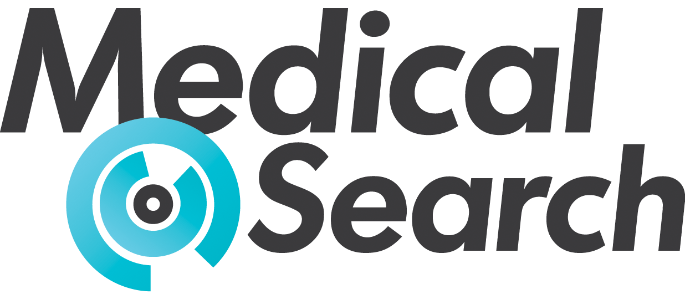






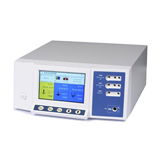

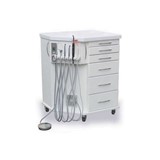

-160x160-state_article-rel-cat.png)

